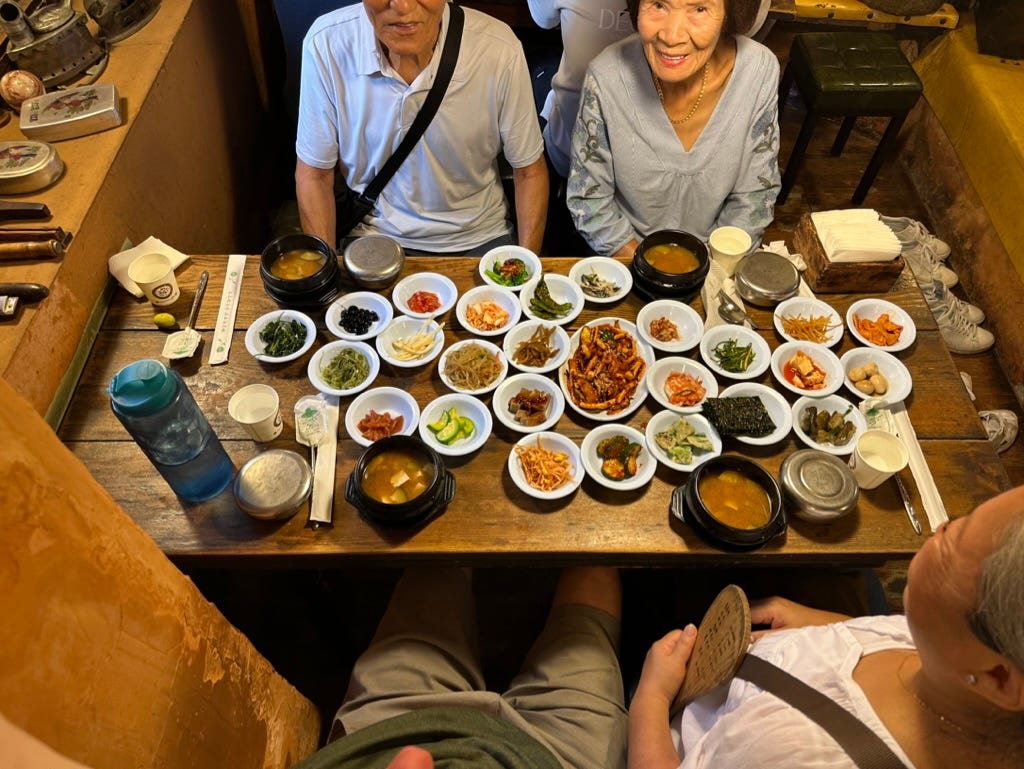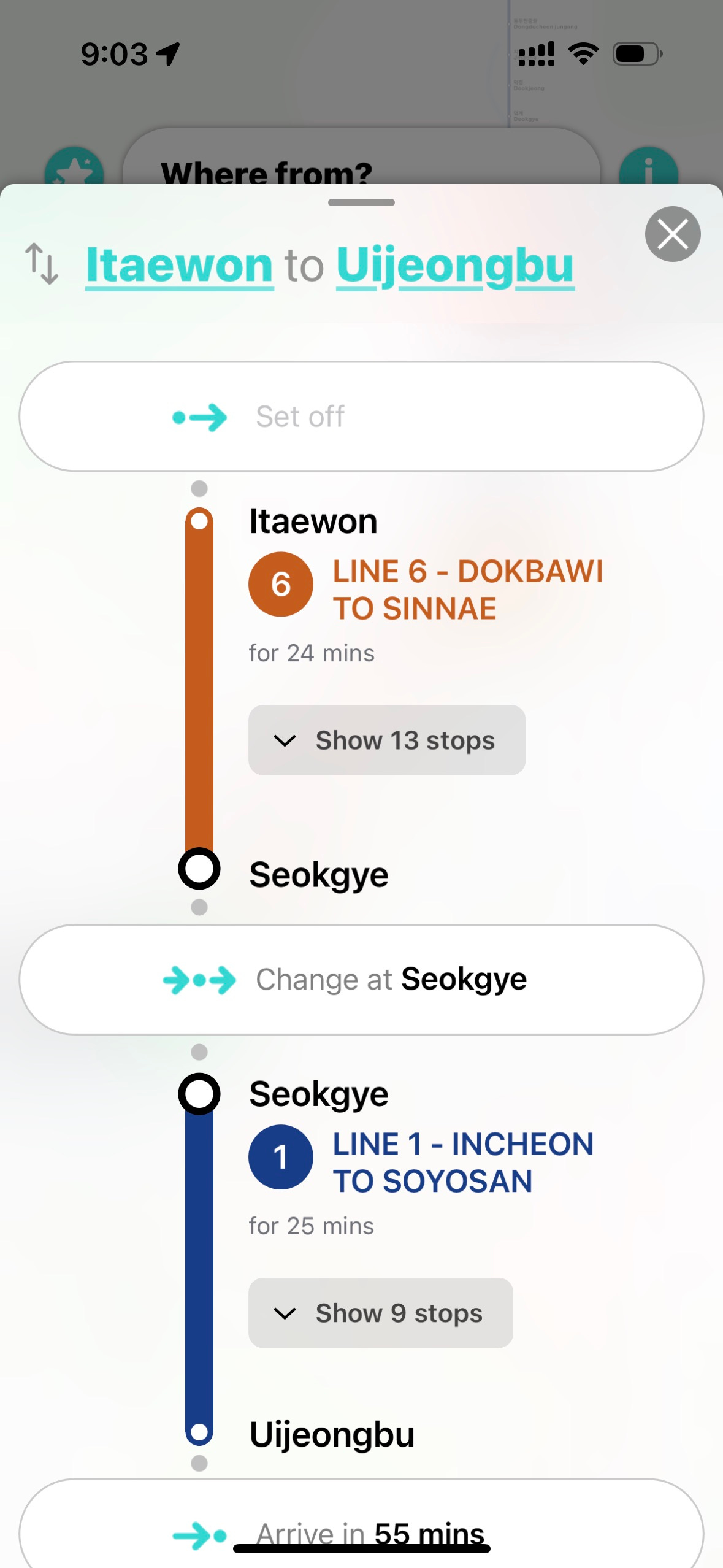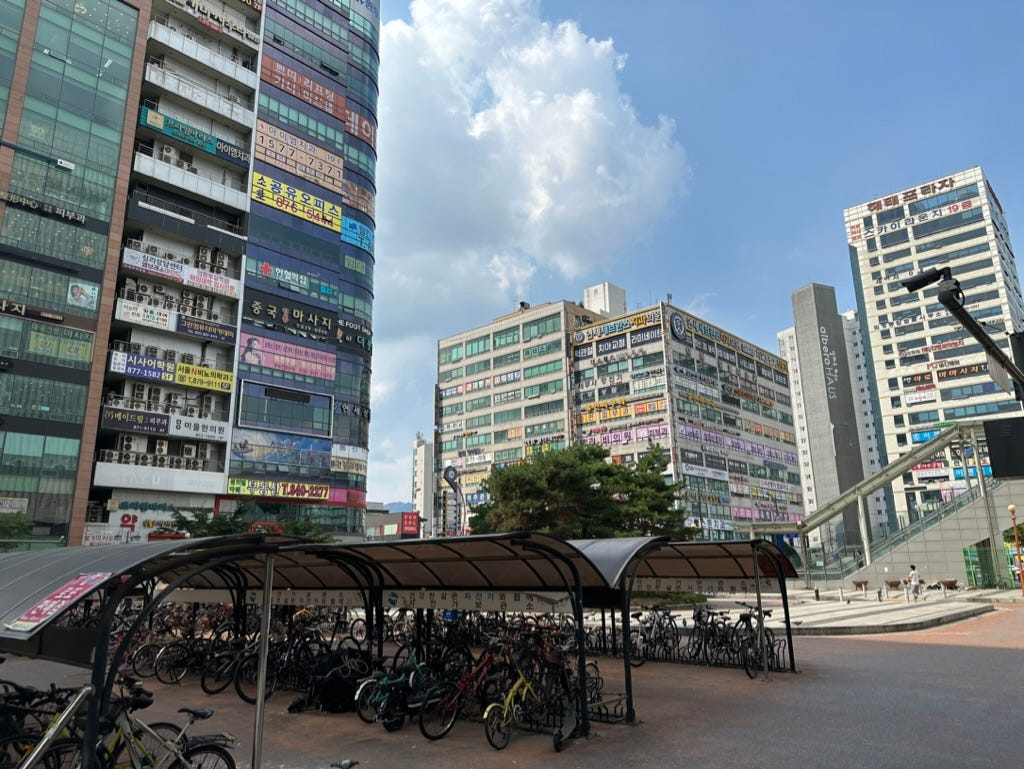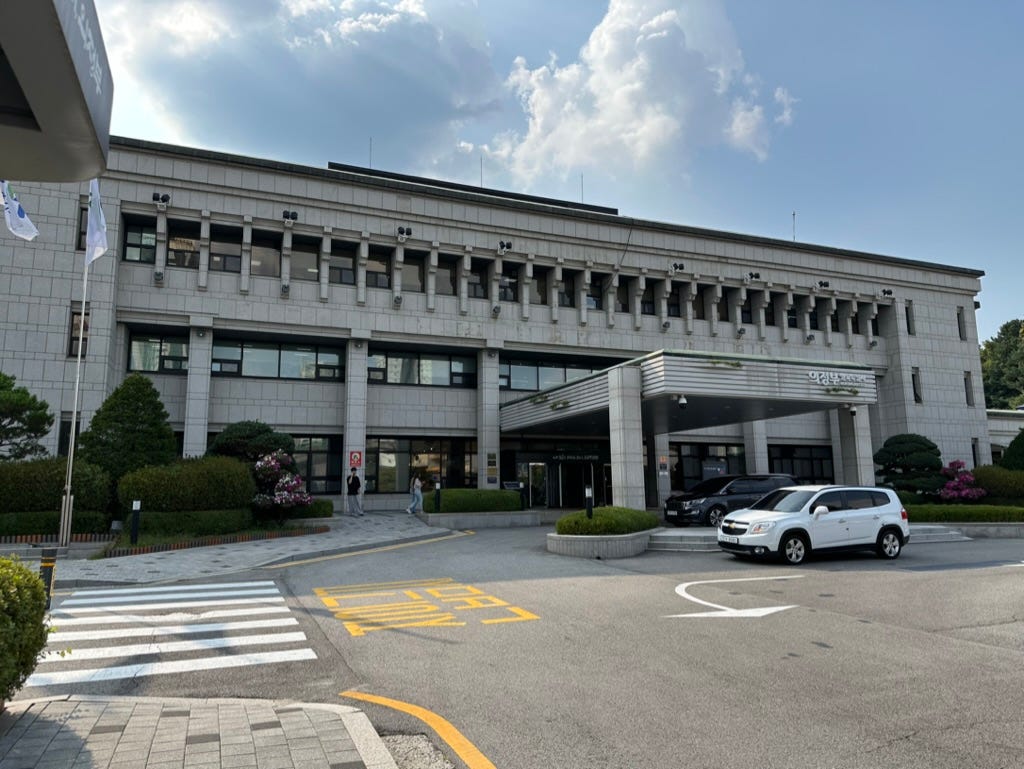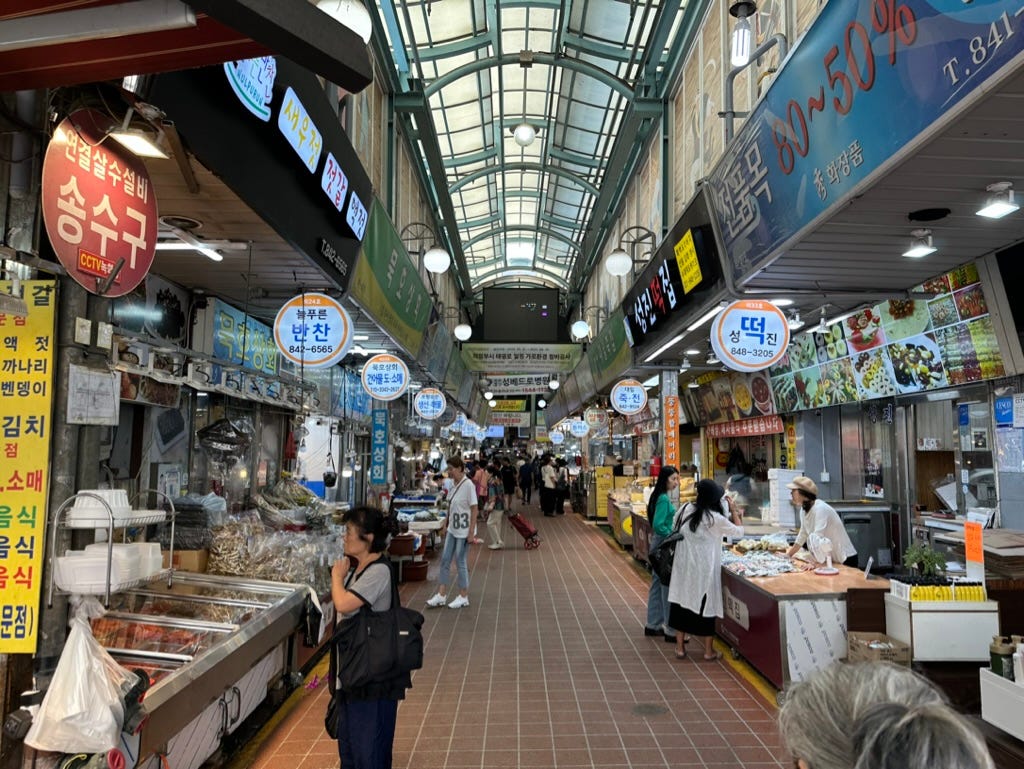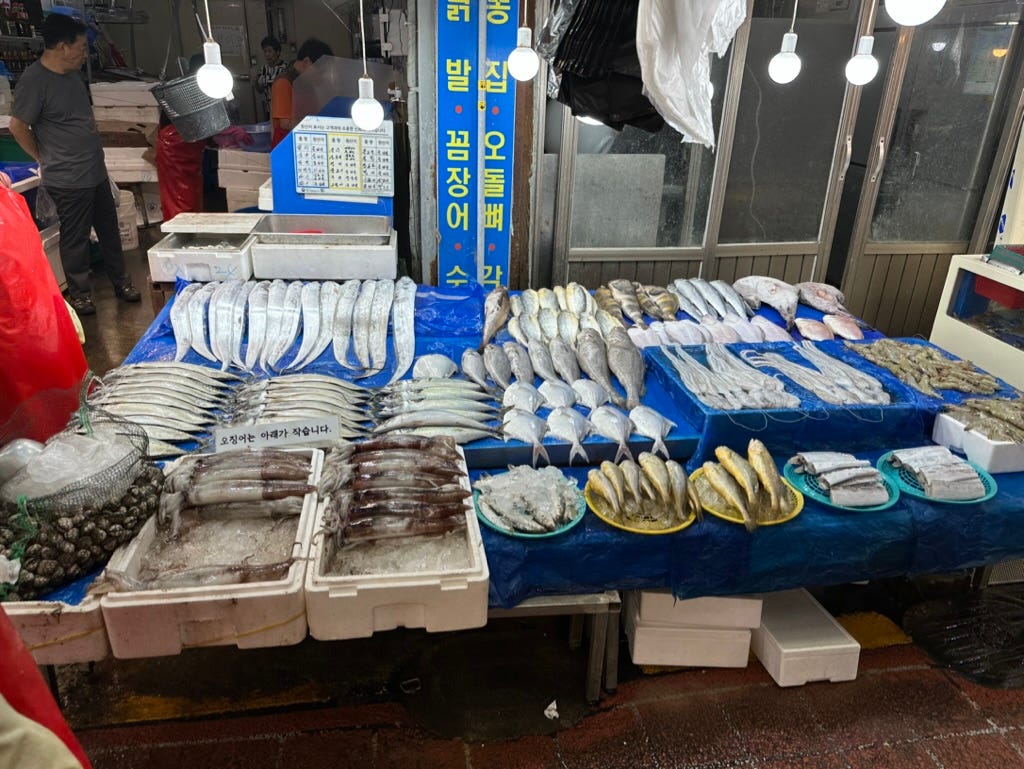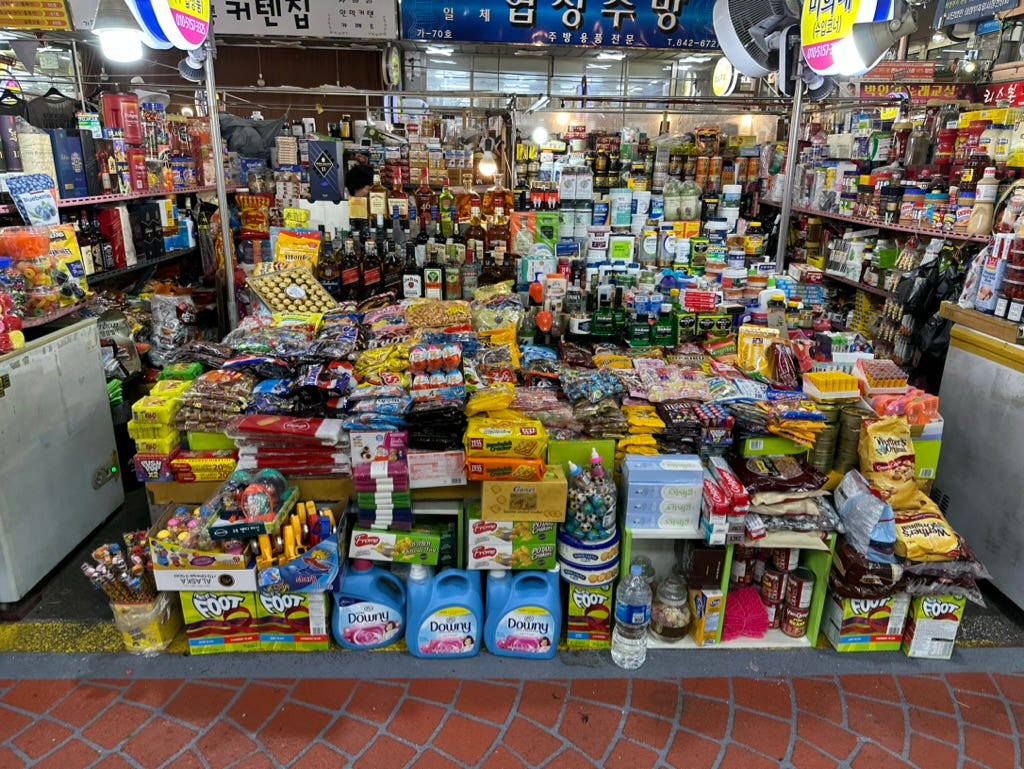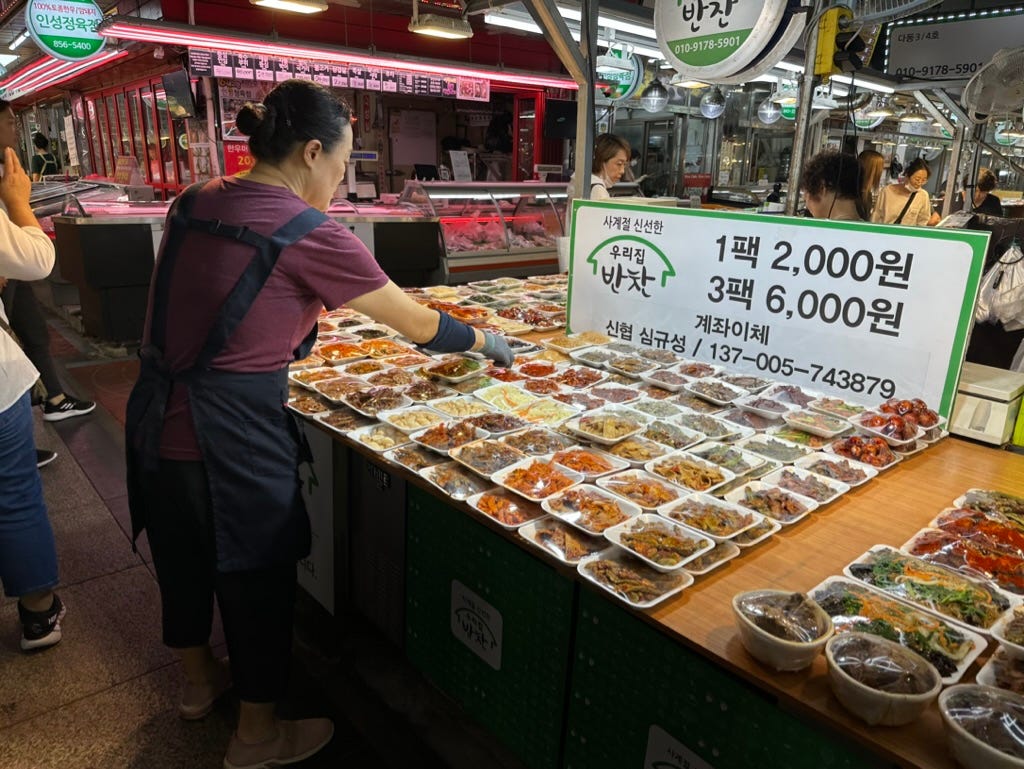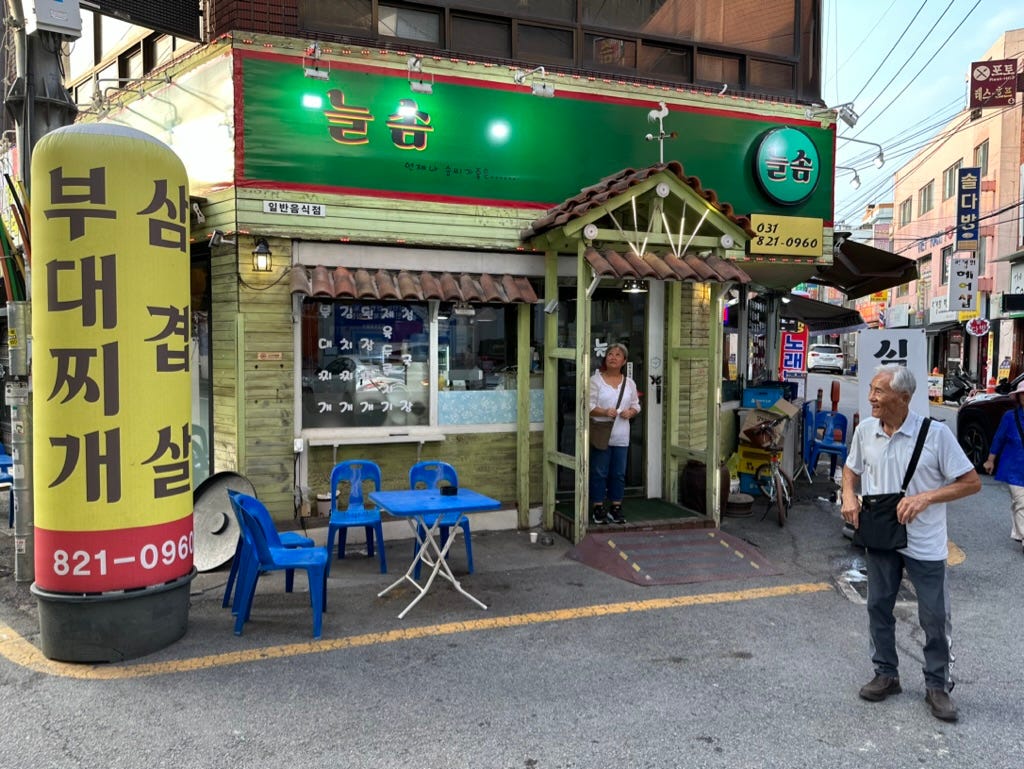South Korea - Chapter 6: The Road to Uijeongbu
When I was a kid, I occasionally heard adults trying to suggest that a particular place was far away by saying it was “in Timbuktu” or “Uijeongbu”. At the time, I didn’t think that either of these places actually existed. To my child’s mind they were as fictional as Hobbiton.
But of course both do exist and one was our objective for today. Uijeongbu (pronounced We-jong-bu) is where my wife Jeannie was born and is about an hour by train from Seoul. Before that though, it was time to tick off another checkbox on my personal list and that involved lunch at a restaurant here in Itaewon that we ate at the last time we were here in back in 2017. I was happy to discover it had survived the pandemic. Its name is 시골밥상 (she-kol-bab-sang).
From the outside it is unimpressive. It looks like it has been there for decades. Perhaps it has. If you didn’t give it a second look, you couldn’t be blamed. What makes this tiny and inconspicuous place special, is the 반자 (bonchon) which is all the side dishes that are a staple of almost any Korean meal. In this case, it’s their speciality. While we ordered a main dish, you don’t need to do so. You can dine on just the side dishes alone because there are plenty of them. For 11,000 Korean Won per person (or about $8USD), you get over 25 side dishes! If you like variety of flavors in a meal, this just can’t be topped. They will also refill them as many times as you like.
It really meets the definition of tiny. The main room has 4 tables which use up nearly all available space. Apparently there’s an upstairs dining room, the stairs to which can be seen in the outside picture above. This obviously requires the staff to take food destined for an upstairs table, outside to get there. We arrived early and yet they were already full. They have a tiny kitchen, a small staff and they used to be open 24/7 but now are open from 10:30AM to 10:30PM. The woman doing most of the cooking looks enough like the woman that was doing most of the cooking when we were here six years ago that I’m nearly certain it’s her. The last time we were here they weren’t busy so after serving us, the four women that were running the place sat at another table and watched Korean dramas on an old tube TV. I’m happy to report that the TV has been upgraded since then.
And as was the case in 2017, they still have their menu on wooden rice paddles.
The only thing that has changed (somewhat noticeable by the wear on select locations on the rice paddle menus) is the price: from 8,000 Won to 11,000. That’s still cheap. The meal was one of my favorites since we arrived a week ago. That’s one thing about South Korea - you can eat very well for not a lot of money.
With our bellies full, we headed for the local metro station to take the train to 의정부 (Uijeongbu). One thing I have come to very much appreciate about Seoul is the availability of public transportation. Perhaps it’s because I grew up in the suburbs where a car is an absolute necessity but it’s so nice to be able to take a 10 minute walk to a metro station then hop on a train for an hour to get to a nearby city. No need to drive, deal with traffic, park and all the other downsides to travel by car. Seoul makes this even easier because virtually every important sign you will come across is in Korean, English and Chinese. It’s also ironic that in cities where there are so many transportation options available, people walk far more than they do in the suburbs.
As I have mentioned before, young Koreans like clothing with English on it regardless of how nonsensical that English may be. I saw a woman yesterday with the text “Page 1 of 365” on her shirt. Today I saw a woman wearing a shirt that read, “Maritime Maintenance.” And on the train today was this guy sitting across from us with a hat that read, “Empty Public Place.”
The iPhone app Seoul Metro makes it really easy to get around the city and nearby cities.
My only complaint is that the app does not use the native controls provided by iOS. No doubt the developer chose some framework to make it easier for he or she to also build an Android version. I’m tempted someday to create a competitor. That would give us an excuse to come back to Seoul for another extended stay.
We arrived in Uijeongbu to find a city of over 450,000 that seems obsessed with using every square inch of available space on the sides of buildings to advertise just about anything.
Both my wife Jeannie and her brother John were born in South Korea but neither had a birth certificate. Our first stop was city hall to see if we could obtain official copies of them.
In Korea, when a child is born it is registered as being part of a particular family. All of this is tracked through the father’s side. Believe it or not, despite having to go through the process of carrying a child for nine months and then delivery, the mother’s name is no where to be found on the birth certificate. Fortunately, despite it being over 50 years ago, they still had records of both their births and family as well. I noticed that on the table where you obtain and fill out various forms, in addition to a pen for signing said forms, there was also an ink pad should you have brought your name chop with you. Jeannie tells me that people that use them tend to carry them wherever they go.
Our next stop was the local market. By market, I don’t mean what most of you think of as a market. This isn’t the local grocery store. This is an area the size of many football fields filled with booths where fresh meat, banchon, snack food, groceries, clothing and more are sold. There were even several women doing on demand alterations. This could be convenient if, after having eaten too much at the market, you find that your pants need to be taken out a bit. Fortunately on a Monday afternoon the market isn’t very busy.
Why make your own side dishes when you can just buy them already made? Unfortunately, no quantity discount.
While my in-laws remembered the market, the city overall has changed dramatically since they left Korea in 1971. Jeannie was only two years old so she doesn’t remember it at all. One big difference between Seoul and Uijeongbu (in addition to being 15 times less populated) is the lack of foreigners. In Seoul you can stand on a corner and it won’t be long before someone walks by who is clearly not Korean. In Uijeongbu I could count the foreigners I saw on one hand. It’s an interesting experience to be the minority. Another difference was the cab drivers. Both we hired in Uijeongbu were quite friendly.
After navigating every aisle of the market, it was time for dinner. As we looked for a place to eat, we walked past a restaurant specializing in American-style burgers. I don’t think they completely understand how their slogan translates.
We of course didn’t eat there but I can guarantee you that had we done so, the burgers would have more closely resembled two pancakes from IHOP than the delicious looking burger in the window.
My Mother-In-Law asked several locals for suggestions which lead us to a small restaurant on a corner called 늘솜 (Nel-som). It had just seven tables and because it was not yet the dinner hour, they had no customers.
It appeared to be run by a family and at the time the son and his mother were in charge. After we placed our order, the son asked where we were from. My Korean is good enough that I could understand my Father-In-Law when he told they son that we were from America and then specifically from Texas.
Hearing Texas, the son smiled and replied that we are from, “the land of barbecue.” When the food arrived, for the first time in the six days we have been in South Korea, I was offered a fork. I waved it off and said, “No.” in Korean. With what little English he knows, he acknowledged that I must know how to use chopsticks. I don’t just know how to use chopsticks, I know how to use Korean chopsticks which in restaurants are usually made of metal which many people who are accustomed to wooden chopsticks can’t manage very well.
After a good meal, we walked 15 minutes or so back to the train station and headed back to Itaewon.
Each time I travel internationally I always end up making the same observation. When you are amongst so many people whose appearance, language, and culture are different from your own, it becomes abundantly clear that like you, each and every one of them is just trying to have a long and happy life. They work or go to school. They have friends and families. They have hopes and dreams. They laugh and cry. They have moments of joy and moments of suffering. This leads to there realization that we are more alike than not. We share a common humanity. If we could truly remember this as we go through our lives, when we encounter a foreigner in our neighborhood or when we hear about how our government is handling a conflict with a far away country, if we could remember that these are people that are more like us than not, if we could just empathize with them for a moment, we would each be making an important contribution to leaving this world better than we found it. A life lived without making even a small difference would be an unremarkable one.
Don’t be unremarkable.




